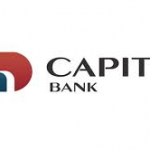Career Tips
Tips for Creating a Professional Portfolio as a Recent Graduate
As a recent graduate, one of the most effective ways to showcase your skills, talents, and accomplishments to potential employers is by creating a professional portfolio. A portfolio serves as a visual representation of your work, providing tangible evidence of your abilities and experiences. However, crafting a portfolio that stands out from the crowd can be a daunting task. To help you navigate this process and maximize your chances of success, we have compiled a list of valuable tips for creating a professional portfolio as a recent graduate.
- Define Your Purpose and Target Audience: Before diving into the portfolio creation process, it’s essential to clearly define your purpose and identify your target audience. Determine the industry or field you are targeting and tailor your portfolio accordingly. Understanding who will be reviewing your portfolio will help you make informed decisions regarding the selection of your work samples, design elements, and overall presentation.
- Select Your Best Work: As a recent graduate, you may not have an extensive body of professional work to showcase. However, you can still curate a collection of your most outstanding projects, assignments, or internships. Focus on quality rather than quantity. Choose work samples that demonstrate your skills, creativity, problem-solving abilities, and growth. Ensure that each piece represents a different aspect of your capabilities and aligns with the requirements of your desired career path.
- Organize and Structure Your Portfolio: A well-organized portfolio is essential for creating a positive first impression. Develop a logical and intuitive structure that guides the viewer through your work. Consider categorizing your projects based on themes, mediums, or disciplines. Use clear headings, subheadings, and labels to make navigation effortless. Remember to include a concise and engaging introduction that highlights your strengths and career objectives.
- Show Your Process: Employers are not only interested in the final outcomes but also in your creative process. Include sketches, drafts, research materials, and any relevant documentation that illustrates your problem-solving approach. By showcasing your process, you demonstrate your ability to think critically, collaborate, and adapt to different challenges.
- Pay Attention to Design and Presentation: Your portfolio’s design and presentation play a crucial role in capturing the attention of potential employers. Create a visually appealing layout that is consistent, clean, and easy to navigate. Choose a professional color palette, typography, and visual elements that align with your personal brand and the industry you’re targeting. Incorporate high-quality images, and consider utilizing multimedia elements such as videos or interactive features to enhance engagement.
- Provide Context and Explanations: Accompany each work sample with clear and concise explanations to provide context. Describe the objectives, challenges, and your role in each project. Discuss the skills and techniques you employed and the outcomes you achieved. By providing these details, you demonstrate your ability to articulate your thought process and communicate effectively.
- Seek Feedback and Iterate: Once you have created your portfolio, seek feedback from mentors, professors, or professionals in your field. Constructive criticism can help you identify areas for improvement and fine-tune your portfolio. Continuously iterate and update your portfolio as you gain more experience and refine your skills
- As a recent graduate, a professional portfolio is an invaluable tool for showcasing your abilities and securing job opportunities. By following these tips, you can create a portfolio that effectively communicates your skills, experiences, and potential to potential employers. Remember to tailor your portfolio to your target audience, choose your best work, organize it thoughtfully, pay attention to design and presentation, and provide context for each project. With a well-crafted portfolio, you will stand out from the competition and increase your chances of success in the professional world.



